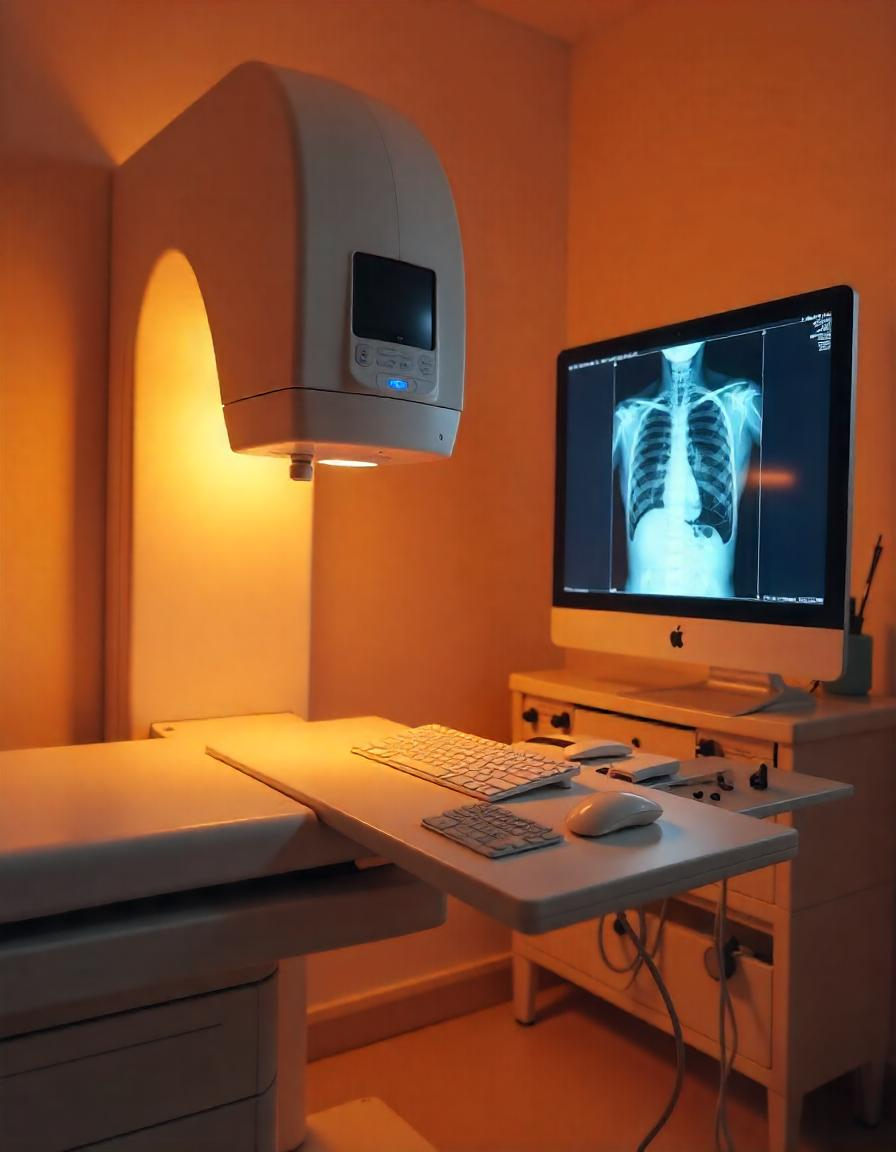A computerized X-ray, also known as digital X-ray, is an advanced imaging technique that captures high-resolution images of bones, organs, and tissues using digital technology. Unlike traditional X-rays that use film, computerized X-rays provide faster, clearer, and more accurate images with reduced radiation exposure.
At Shalaka Imaging Center, we offer state-of-the-art computerized X-ray services for a wide range of diagnostic needs, ensuring quick and precise results.
How Does a Computerized X-Ray Work?
- X-ray Generation – A controlled dose of X-ray beams is directed toward the body.
- Digital Sensor Capture – Instead of film, a digital detector records the X-ray image.
- Image Processing – The captured image is instantly processed and displayed on a computer screen for detailed analysis.
- Diagnosis – A radiologist examines the image to detect fractures, infections, or abnormalities.
This process ensures faster image acquisition, better contrast, and enhanced diagnostic accuracy.
Uses of Computerized X-Ray
Computerized X-rays are widely used in various medical fields, including:
1. Bone and Joint Imaging
- Detects fractures, dislocations, and bone injuries.
- Assesses conditions like arthritis, osteoporosis, and joint degeneration.
- Evaluates spinal abnormalities such as scoliosis or disc degeneration.
2. Chest and Lung X-Rays
- Diagnoses pneumonia, tuberculosis, lung infections, and chronic obstructive pulmonary disease (COPD).
- Detects fluid buildup in the lungs (pleural effusion).
- Assesses heart enlargement and rib fractures.
3. Abdominal X-Rays
- Identifies kidney stones, gallstones, and intestinal obstructions.
- Helps detect abnormal growths, tumors, or foreign objects.
4. X-Ray Guided Procedures
We offer specialized X-ray-assisted diagnostic procedures, including:
- Sinogram – Examines abnormal sinus tracts or fistulas.
- Fistulogram – Evaluates abnormal connections between organs or tissues.
- Intravenous Pyelogram (IVP) – Assesses kidney function and detects urinary tract obstructions.
- Barium Studies – Examines the digestive tract for ulcers, tumors, or swallowing disorders.
Advantages of Computerized X-Ray
- Faster & More Accurate Imaging – Digital processing enhances image quality and detail.
- Lower Radiation Exposure – Safer than traditional X-rays, making it ideal for repeated use.
- Instant Digital Reports – Reduces waiting time for diagnosis and treatment planning.
- Better Image Storage & Sharing – Digital records can be stored securely and shared with specialists if needed.
- Enhanced Contrast & Clarity – Allows radiologists to detect subtle abnormalities easily.
Why Choose Shalaka Imaging Center for Computerized X-Ray?
- Latest Digital X-Ray Equipment – Ensuring high-quality imaging with minimal radiation.
- Expert Radiologists – Experienced professionals providing accurate diagnoses.
- Comfortable & Efficient Process – Quick and hassle-free scanning for patients.
- Same-Day Reports – Fast turnaround for immediate medical intervention.
